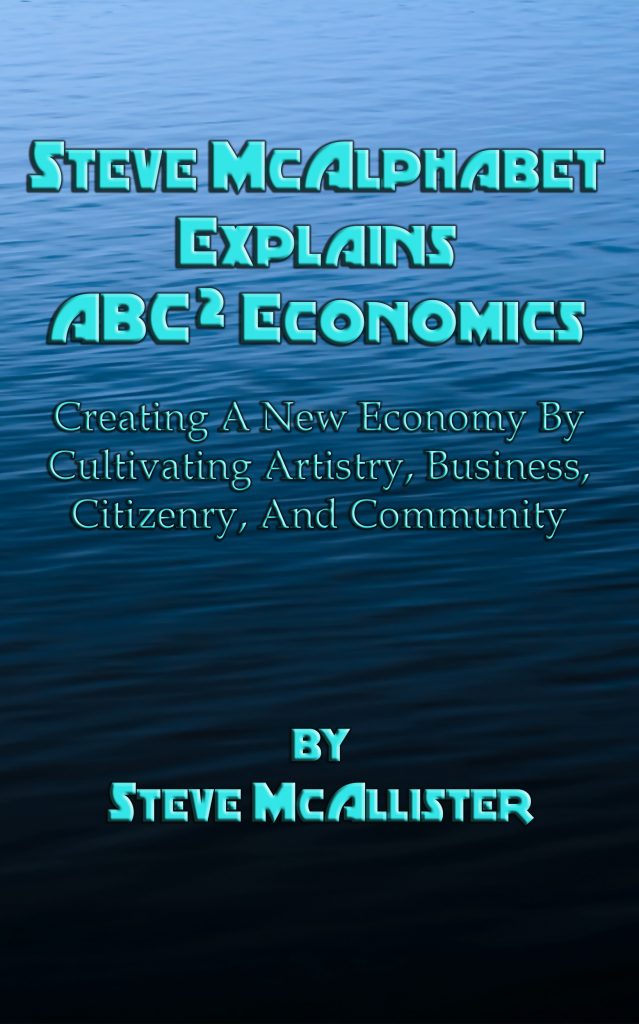Although we’re led to believe that having fifty different varieties of Oreo cookies and a few dozen different types of toothpaste should provide us with the purposeful choices that make life worth living, many of us feel that the amount of work we have to do in order to make those choices isn’t worth it. Many of us feel, and rightfully so, that we’re being taken advantage of.
“For three decades after World War II,” Robert B. Reich reminds us in Saving Capitalism: For the Many, Not the Few. “America created the largest middle class the world had ever seen. During those years the earnings of the typical American worker doubled, just as the size of the American economy doubled. Over the last thirty years, by contrast, the size of the economy doubled again but the earnings of the typical American went nowhere. Then, CEOs of large corporations earned an average of about twenty times the pay of their typical worker. Now they get substantially over two hundred times. In those years, the richest 1 percent of Americans took home 9 to 10 percent of total income; today the top 1 percent gets more than 20 percent.”
Although many tried to dismiss the Occupy movement that started on Wall Street as a rebellious antic caused by economic angst, their cries did not go unheard. Unfortunately, we have yet to find an adequate solution to deal with the challenges that face us and the system that has enslaved us. Yet looking at the past may give us some clearer insight as to how to progress into the future.
“The parallel between ancient Rome and the present day is striking,” says Charles Eisenstein in Sacred Economics. “Now as then, wealth is increasingly concentrated in the hands of the few. Now as then, people must go into lifelong debt that they can never pay off just to have access to the necessities of life. Then it was through access to land; today it is through access to money. The slaves, serfs, and tenants gave a lifetime of labor to the enrichment of the landowners; today the proceeds of our labor go to the owners of money.”
When slavery, the forced servitude we’ve become familiar with through films like Amistad, 12 Years a Slave, and Django Unchained, was practiced in America, the slaveowners would still provide food and housing for the slaves, as meager as it may have been. In the capitalism so many are currently enslaved by, servants are largely required to work for the owners of capital in order to pay the owners of capital for food and housing, as well as the other necessities of life. Unfortunately, the servants are having to work longer and harder to appease the insatiable appetites of the owners of capital.
“Over the past half-century or so,” says Richard Florida in The Great Reset, “the amount of money the average American family spends on housing and cars has skyrocketed. From 1950 to the mid-1980s, the amount allotted for housing and cars doubled from 22 percent to 44 percent of its budget. (At the same time, the amount the average American family had to devote to health care rose threefold, from 5.2 percent in the late 1950s to 14.8 percent by the year 2000.) A generation ago, all of life’s basic necessities – housing, transportation, health insurance, education, and taxes – accounted for 54 percent of the average family’s income; today, they account for 75 percent of it.”
It would seem that the economic system we’ve been following somehow thrives on instability, including the insecurity of the consumers and servants who enable it. As so many in the populace teeter precariously between employment and homelessness, those who’ve realized the rules to the game of economics are able to make huge sums of money on the misery created through the systems’ unquestionable shortcomings.
“Our identification of what is wrong is straightforward,” Hyman Minsky wrote in Stabilizing An Unstable Economy. “Since the mid-1960s, the economy has been characterized by turbulence in the form of financial instability, inflation, and rising unemployment, along with a sharp slowdown in the pace at which living standards improve. This turbulence stands in sharp contrast to the tranquility and progress that ruled in the prior twenty years. The conclusion of the analytical argument is that turbulence – especially financial instability – is normal in a capitalist economy; the tranquil era between 1946 and 1966 was an anomaly.”
Indeed, according to the study “Economics and Happiness: Framing the Analysis” by Luigino Bruni and Pier Luigi Porta, America seems to have hit its peak happiness levels in 1956. Throughout this period, Americans enjoyed a higher rate of economic equality, greater social mobility and spending power, lower crime, and a GI Bill that gave an education to 7.8 million veterans who needed a way to deal with what they had experienced in battle. And although it allowed for a surge in real estate as suburbia spread throughout the land, the stability enjoyed during this time, which built upon what many would consider the socialist notions of the New Deal, would not last as the speculation of finance, the inordinate amount of bullshit required to manufacture instability through the ideology of scarcity, came to dominate our economic system.
Since then, we’ve come to fully embrace the notions of planned obsolescence, which requires us to make products that don’t last and need to be replaced in order to keep the economy moving, and fractional reserve banking, where banks can seemingly create money out of thin air by borrowing against money that doesn’t exist. The insanity of our system is that, while it seems to flourish on the idea of scarcity, it doesn’t recognize it in the real world.
“The problem is,” as Paul Mason states in Postcapitalism: A Guide To Our Future, “mainstream economics does not understand its own limitations.”
With finance as the economic driver, our economy must feed on every resource available to us in order to turn them into units of currency, largely represented by digital dollars with no intrinsic value. So even though it looks impressive to the simple minds that are impressed by big numbers as the GDP grows, the reality is that we are sacrificing every ounce of the ancient sunlight that is oil, every oxygen-providing tree, every drop of life-giving water, and every calorie of human energy in order to create units of light and information that we can gather together for those who have no dirt under their fingernails. We must rethink the true goals of economic growth.
“While exponential growth” says Geoffrey West in Scale: The Universal Laws of Growth, Innovation, Sustainability, and the Pace of Life in Organisms, Cities, Economies, and Companies, “is a remarkable manifestation of our extraordinary accomplishments as a species, built into it are the potential seeds of our demise and the portent of big troubles just around the next corner.”

This is an excerpt from the book Steve McAlphabet Explains ABC Squared Economics. Go to https://stevemc.xyz/books/steve-mcalphabet-explains-abc-squared-economics/ to find out more.


